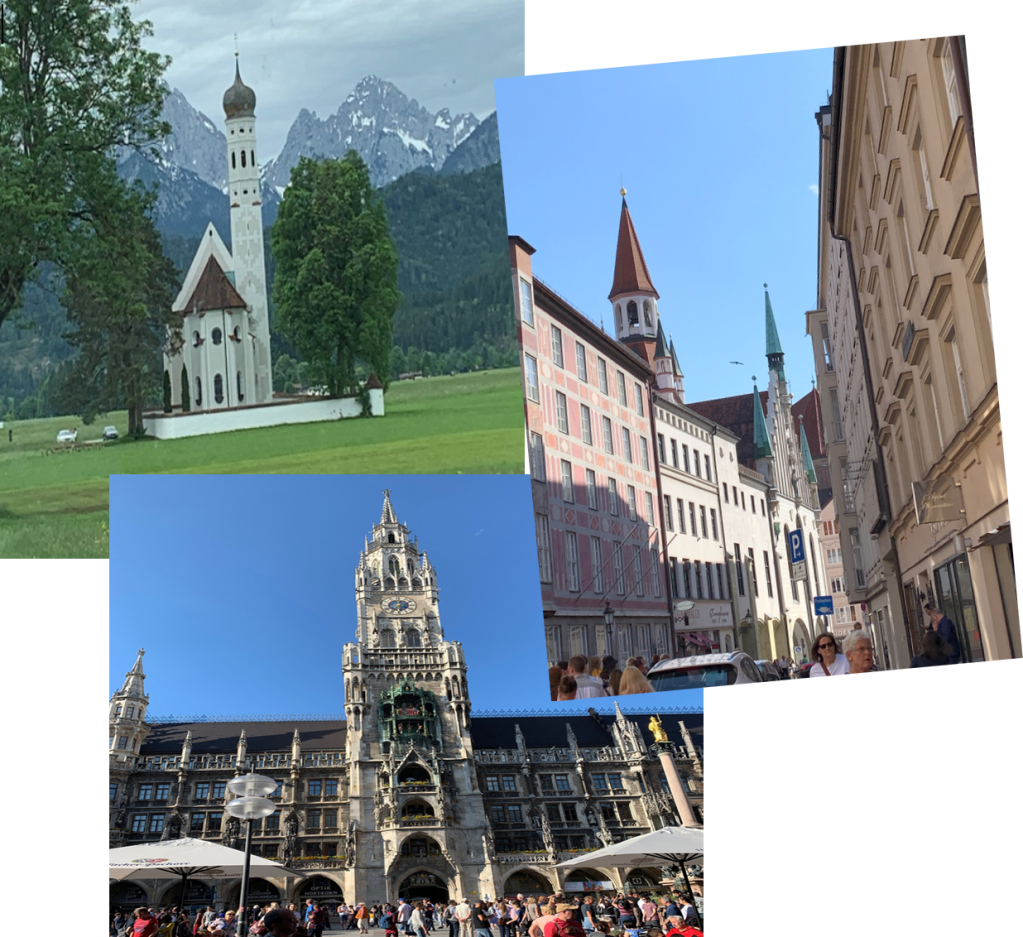Germany : Munich and Dachau Concentration Camp
If you missed Part 1, I’ll restate, that I believe in experiential education. And to put my belief into practice, every three years, I organize a journey travel through a company called EF Tours for students and adults. You can check them out here. My experiences with them have been stellar. (Please mention me if you decide to organize your own group travel.)
This week’s post will cover the exciting city of Munich and our visit to nearby Dachau, site of one of the first Nazi concentration camps in Germany. First of all, let me give a shout out to our group’s Tour Director, Andreas. What an excellent source of insider knowledge, in-depth conversation, and pleasant personality he was! We were fortunate to tour under his guiding hand. His use of technology to orient our group to the cities we were about to explore and his flexibility and willingness to find sights and activities of interest to us, made the trip much more enjoyable and informative. Thank you, Andreas!

We toured Munich on foot and by bus, but some of us also had the opportunity to visit Olympic Park, pass by a heavy metal concert and make a stop at a folk festival where we listened to a three woman group from Yemen. The next evening, my husband and I made a hike with Andreas and the other group touring with us to visit a make-shift Michael Jackson Shrine and the local Hard Rock Cafe. We also made a tiny stop for gelato! Mmm.


Our visit to Dachau was a study in contrasts. Walking through the gate with its inscription, Arbeit Macht Frei (work makes you free), I imagined myself as a prisoner, leaving behind all personal freedom and knowing in my heart that the phrase was a lie – that the only freedom I might find here would be in death. Then I thought of myself as an Allied soldier marching through the gate in triumph to free those left alive. In that sense, the soldier’s work did produce freedom, though precious few received it. The echos of heartache, calculated cruelty and diminished humanity whispered from each building, each display, each crunch of gravel.

Dachau’s many memorials reminded me of the importance of educating the our youth not just about the important facts of history, but of the causes and effects, the why and hows, too. Memorizing a few names, dates, and places that are soon forgotten will not prevent the horrific events of humanities’ past from recurring. Only by studying and recognizing the causes and methods by which those events were begun and advanced will allow future generations to understand and predict, then influence and alter, an errant, destructive or selfish course before it becomes impossible to resist as happened in the case of Hitler’s pre-war Germany among other examples.
As educators and world citizens, we must never allow those in our sphere of influence to fall prey to such shallow and lackluster methods. Demand the truth be taught. Demand to share the why. As students of the world, we must never simply follow mindlessly. Dare to ask the hard questions and stand firm until satisfactory answers are given. Don’t just exist on the surface of the pond. Search below the calm waters to the churning beneath. This, along with offering love and support to fellow humans, is how we can best protect the continued existence of our world.
If you agree with me, please reblog, share and comment. If you don’t agree, rail at me in the comments. I am looking forward to all of your reactions and thoughts.

May the light and peace found in Heaven bring you hope!
Next week: Innsbruck and Venice